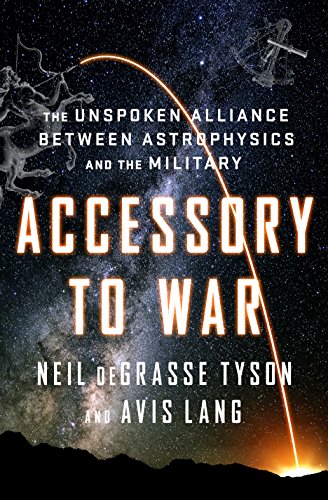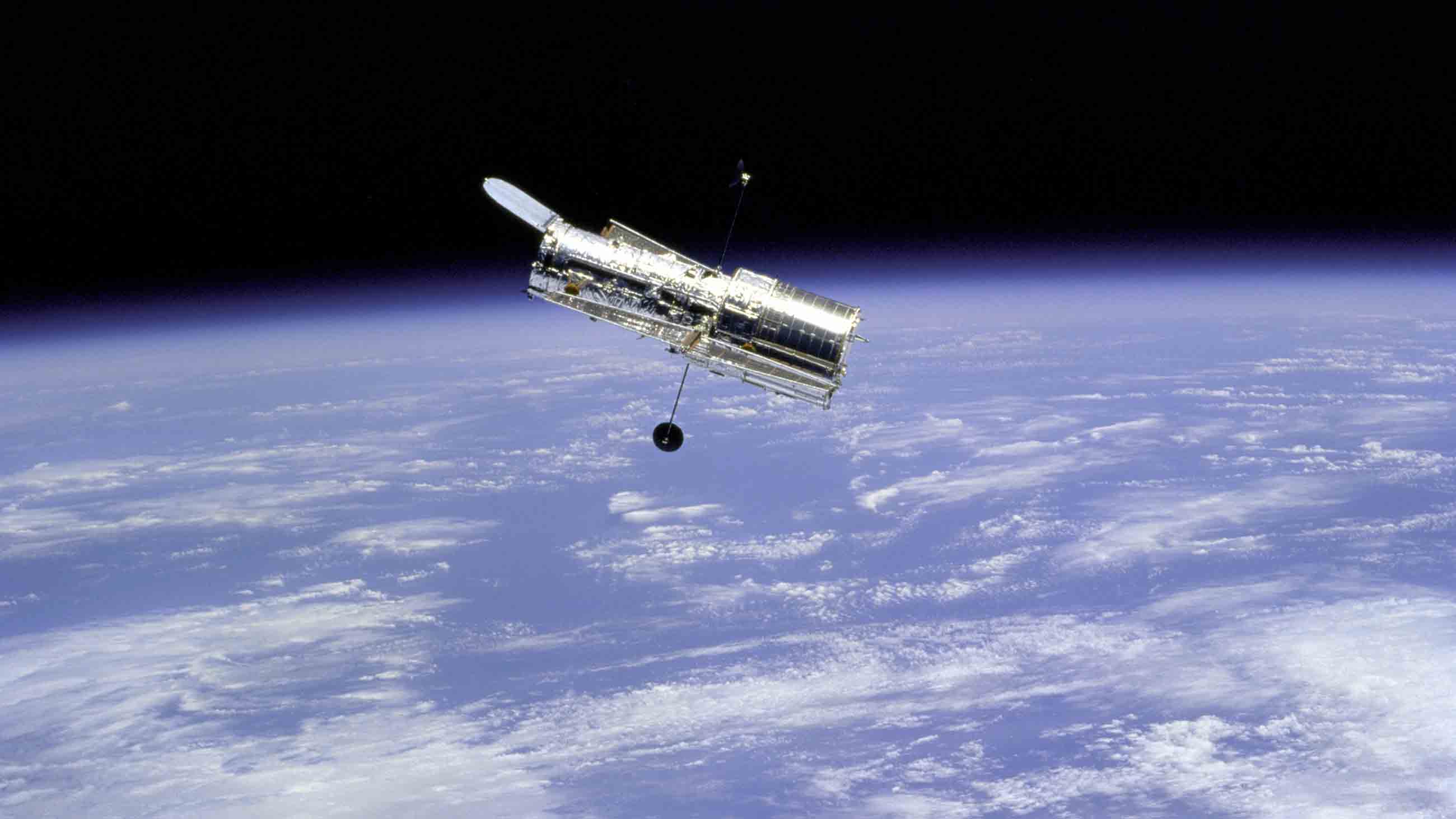The fact that “we are all made of star stuff,” as Carl Sagan famously put it, has become fairly common knowledge by now, celebrated in movies, poems, and song lyrics. What’s generally not known is that a key confirmation of “stellar nucleosynthesis,” the creation of the heavy elements that comprise our bodies and our planet, came from the testing of nuclear weapons.

BOOK REVIEW — “Accessory to War: The Unspoken Alliance Between Astrophysics and the Military,” by Neil deGrasse Tyson and Avis Lang (W. W. Norton & Company, 576 pages).
As detailed in a seminal 1957 astrophysics paper by Geoffrey Burbidge, Margaret Burbidge, William Fowler, and Fred Hoyle, the identification of the radioactive isotope californium-254 in fallout debris from nuclear tests in the Pacific provided the vital evidence necessary to verify how heavy elements are formed from lighter atoms. In a cosmic irony, the most destructive weapon ever invented by humankind also revealed the secret of creation.
The Atomic Energy Commission certainly wasn’t detonating H-bombs to provide data for a quartet of astrophysicists, but it’s one example of the symbiotic relationship between science and the military in Neil deGrasse Tyson and Avis Lang’s “Accessory to War: The Unspoken Alliance Between Astrophysics and the Military.”
It may be an uncomfortable and at times contentious alliance, but it’s real, and it works in both directions: “Many significant advances in our understanding of the cosmos are by-products of government investment in the apparatus of warfare, and many innovative instruments of destruction are by-products of advances in astrophysics.”
Rife with irony, ethical dilemmas, and mutual advantage, the partnership of science and the military is far older than the technological conflicts of the 20th century. The earliest telescope, for example, was intended by its inventor Hans Lipperhey in the 17th century not for contemplating the heavens but for scanning the horizon for enemies, the key point of his sales pitch to the Dutch military forces then embroiled in the 80 Years’ War. His instrument was “very useful in sieges and similar occasions,” an insider’s account enthused.
Lipperhey’s telescope, “marketed to the Chiang Kai-sheks and Benito Mussolinis of their era, not to the Carl Sagans and Stephen Hawkings,” was soon after refined and deployed by Galileo for the more noble tasks of discovering the moons of Jupiter and the craters of the Moon — though he also wasn’t above seeking the patronage of the Venetian authorities by extolling the virtues of his improved instruments for sighting approaching enemy warships.
Then as now, the aims of astrophysics and warfare are hardly as disparate as they may seem, as Tyson and Lang explain in sometimes exhaustive detail. Critical to both endeavors is light, or more precisely, electromagnetic radiation: detecting it, locating it, analyzing it, recording it and generating it, both actively and passively, across the entire spectrum from radio waves through infrared, visible light, ultraviolet, X-rays, and gamma rays. “It’s how the contemporary astrophysicist — and the contemporary warfighter — wants to use the light that makes all the difference,” note Tyson and Lang. All of those wavelengths have become subdisciplines of astronomy, but sometimes the military got there first.
While that shared interest in light has given us varied applications for the same technologies, whether in communications, radar, photography, or navigation, among others, the different aims can also be problematic. A notable case is the Hubble Space Telescope, which has revealed so many cosmic wonders. Although its scientific activities have always been strictly civilian, its pedigree was originally shrouded in deep secrecy. It is a direct descendant of the KH-9 Hexagon spy satellite developed for the National Reconnaissance Office, and the pesky glitches that initially plagued the Hubble after its launch in 1990 were mostly due to overlooked technical differences between the quite different functions of staring down at the Earth for signs of Soviet skullduggery and gazing upward into infinity for clues to the nature of the universe.
The book is a saga of such cross-pollinations, such as the CCD (charge-coupled device) technology that transformed the clumsy spy satellite tech of the 1960s into the exquisitely sensitive Keyhole and Hexagon while also revolutionizing astronomical imaging; the birth of gamma-ray, infrared, and X-ray astronomy as an outgrowth of military sensing and detection efforts; and the connection of missile defense projects to the monitoring of near-Earth asteroids.
Usually, such complementarity hasn’t arisen from astrophysicists actively seeking to support military objectives, but from the scientists and the generals trying to do essentially the same things for different reasons. As Tyson and Lang point out, most scientists tend toward the liberal/antiwar end of the political spectrum — “Like the vast majority of my fellow astrophysicists, I recoil at the prospect of war,” Tyson writes. But the cold reality that it’s always been easier to fund research with a military application remains as true today as it was in ancient Greece, making scientists the handmaidens to war and military technology: “Space exploration may pull in the talent, but war pays the bills,” the authors note. That makes astrophysicists “neither protagonists nor accomplices” but reluctant “accessories to war.”
Tyson and Lang also delve deeply into the arcane international negotiations and diplomatic wrangling that have attempted to define the military’s access to and use of space. As they write, “While the exercise of national sovereignty may seem relatively straightforward down here on the surface of our planet, it’s almost unachievable in space,” which complicates devising workable treaties and codes of conduct for military activities in space.
The 1967 Outer Space Treaty was the first major attempt to do so, but given its conception during the depths of the Cold War, it is becoming increasingly inadequate in a world of multiple spacefaring nations, deploying technologies that were inconceivable 50 years ago. While the military has been ingrained in the space age since the beginning, a line still exists between the militarization of space and its weaponization. Just where that line should be drawn, and how firmly, is one of the pressing global geopolitical issues of the 21st century.
Fans of Tyson’s previous books, such as last year’s “Astrophysics for People in a Hurry,” may find “Accessory to War” a considerably more demanding read. The scope and complexities of its subject don’t lend themselves to a breezy popular treatment, and the volume is almost academic in its density and detail, with well over a hundred pages of references and no illustrations. But it’s worth the effort, because whether we’re aware of it or not, its subject matter and ramifications are part of the everyday fabric of our lives, wrapped up in our GPS systems, Google Map directions, even the photos we snap with our CCD-equipped smartphones.
So far, space war may be only the stuff of science fiction, but as more nations establish themselves in space and the prospects for orbital conflict grow, an awareness of the rapidly approaching choices and challenges rushing toward us will be as essential as our satellite-enabled internet connections.
Space is already a well-established “theater of operations,” as the military phrases it, but there’s still time to prevent it from becoming another arena of open conflict. “Accessory to War” explains how we got to this point, and how it may yet be possible to keep the CGI death rays on our movie screens from bursting for real in our skies.
Mark Wolverton is a science writer, author, and playwright whose articles have appeared in Undark, Wired, Scientific America, Popular Science, Air & Space Smithsonian, and American Heritage, among other publications. His forthcoming book “Burning the Sky: Operation Argus and the Untold Story of the Cold War Nuclear Tests in Outer Space” will be published in November. In 2016-17, he was a Knight Science Journalism fellow at MIT.










